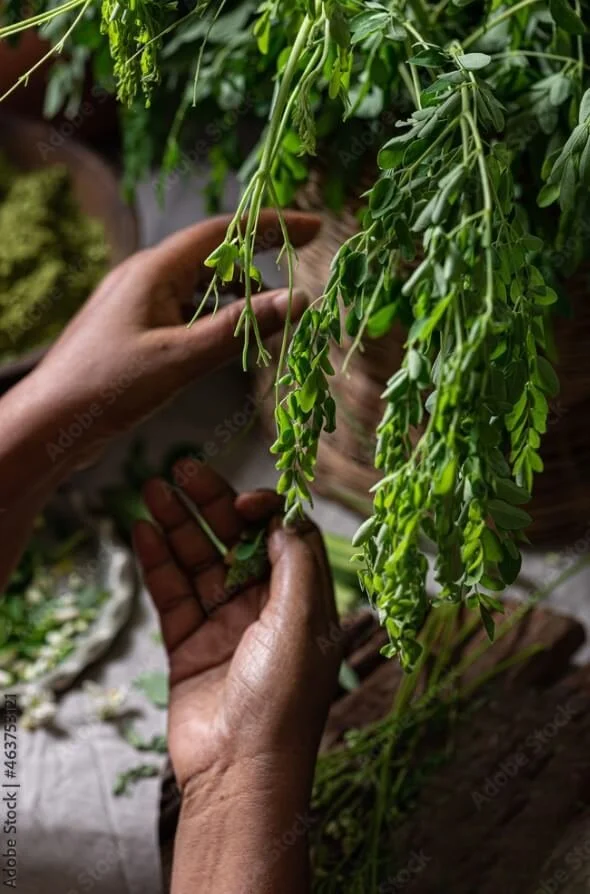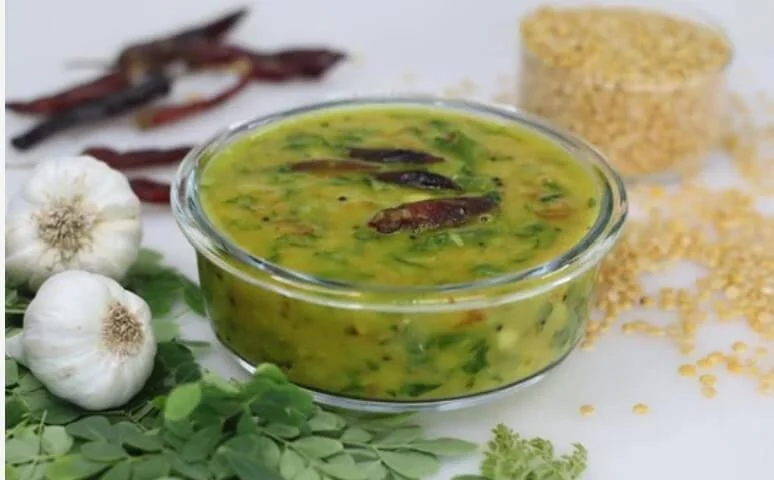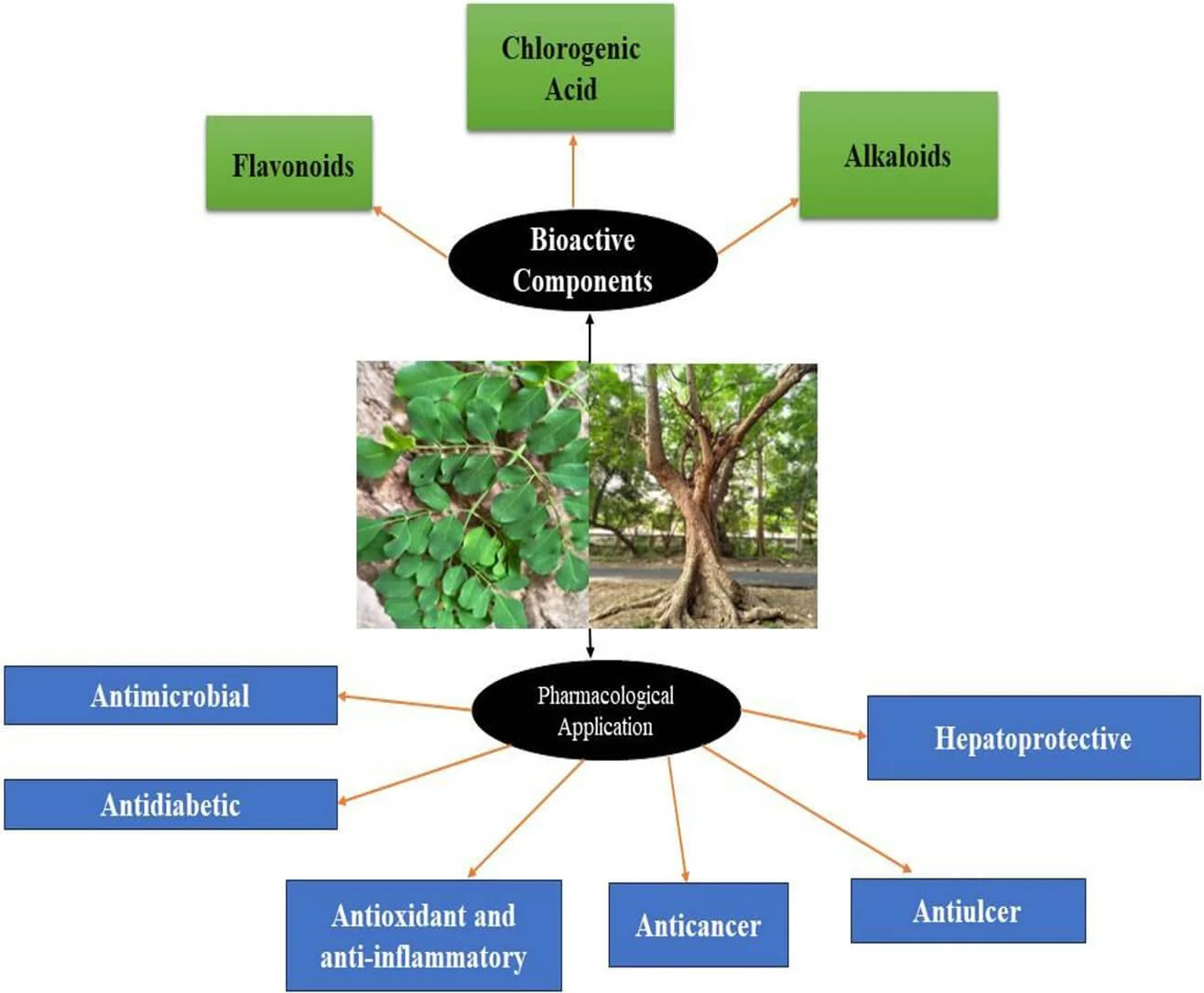Moringa: From Humble Plant to Ayurvedic Hero - What's the Secret?
Growing up in Malaysia, Moringa was just…there. A humble plant, growing seemingly everywhere. I remember the long, slender drumsticks dangling from the branches and the feathery leaves my grandma would toss into her amazing curries. It wasn't until years later, when I started studying Ayurveda, that I realized this unassuming plant was actually a nutritional powerhouse and a revered herb in traditional medicine.
So, how did Moringa go from a humble backyard plant to an Ayurvedic hero? Let's explore the secrets of this amazing tree and discover its benefits, uses, and significance in Ayurveda.
Moringa -Truly a Humble Plant
Moringa: A Humble Plant with Deep Roots
Moringa oleifera, also known as the drumstick tree or horseradish tree, is native to the Indian subcontinent but is now cultivated in many tropical and subtropical regions around the world. It's a fast-growing, drought-resistant tree that is known for its remarkable nutritional profile and medicinal properties.
Moringa has been used for more than 4000 years and treasured for its many benefits (Pareek et al., 2023; Samiksha et al., 2023). This superfood had always played an integral part in the Indian culture and now the world is slowly catching on to this 'miracle tree' for its amazing health benefits.
Every part of the Moringa tree is edible, but the leaves and drumsticks are the most commonly used. The leaves are packed with vitamins, minerals, and antioxidants, while the drumsticks are a good source of fibre and protein (Gopalakrishnan et al., 2016). Nevertheless, every part (leaf, pod, bark, gum, flower, seed, seed oil, and root) of Moringa tree can be used to treat one disease or another.
Grandma's Kitchen: Moringa in Malaysian Cuisine
My grandma was a master of using whatever was available in her garden, and Moringa was a staple in her cooking. I remember her making:
Moringa leaf dhal curry: A flavourful and nutritious dish with lentils and spices.
Drumstick sambar: A tangy lentil-based soup with drumsticks and vegetables.
Moringa fritters: Crispy and delicious snacks made with moringa leaves and gram flour.
Moringa flower stir-fry: Simple and nutritious stir fry with grated coconut and spices
She always said Moringa was good for everything – for strong bones, good digestion, and clear skin. Turns out, she was right!
Moringa Leaf Dhal Curry - Delicious and Nutritious
Moringa in Ayurveda: A Balancing Act
In Ayurveda, Moringa is considered a valuable herb with a wide range of therapeutic properties. It is believed to balance Vata and Kapha, and may also be used for Pitta. It is utilized in the treatment of various ailments.
According to Ayurveda, Moringa has qualities (Gopalakrishnan et al., 2016; Samiksha et al. 2023):
Ushna virya (heating energy):
Supports the heart and reduces blood pressure and inflammation in the circulatory system.
Helps with dysmenorrhea and blocked menstruation.
Ruksha (drying): Reducing excess Kapha in the respiratory system.
Laghu (light): Easy to digest and doesn't weigh you down.
Tikshana (pungent): Aids in improving digestion, antibacterial and deworming.
Kshara rasa (alkaline taste):
Helps to balance acidity in the body.
Decreases acidity in gastric ulcers.
Almost all parts of the Moringa trees have been used as natural medicine in Ayurveda, which includes leaves, seeds, pods, flowers, bark and root to support (Agrawal & Mehta, 2008; Kaur et al., 2015; Islam et al., 2021; Samiksha et al., 2023; Pareek et al., 2023):
Immunity: Rich in antioxidants and vitamins that boost the immune system.
Digestion: High in fibre promoting healthy digestion and prevents constipation.
Skin Health: Helps to purify the blood and improve skin tone.
Nervous system: Valuable remedy for treating nervous system disorders as well as memory enhancing agent.
Respiratory: Improve respiratory function by removing excess mucus from the lungs.
Joint Health: Reduces inflammation and supports joint mobility.
Science-backed benefits of Moringa.
Source: Kumar et al., 2024
The Science-Backed Benefits of Moringa
Modern research has confirmed many of the traditional uses of Moringa, highlighting its potential benefits for (Ghasi et al., 2000; Al-Asmari et al., 2015; Kushwaha et al., 2012; Islam et al., 2021; Pareek et al., 2023; Kumar et al., 2024):
Nutrition: Moringa leaves are an excellent source of vitamins A, C, and E, calcium, iron, zinc, potassium, magnesium, and protein.
Antioxidant Activity: Moringa is rich in antioxidants that protect against cell damage and has therapeutic potential for prevention of complications during post menopause.
Anti-Inflammatory Effects: Moringa can help to reduce inflammation throughout the body.
Blood Sugar Control: Studies suggest that Moringa may help to regulate blood sugar levels.
Cholesterol Reduction: Moringa may help to lower cholesterol levels.
Iron deficiency: High iron in Moringa can potentially help to reduce iron deficiency.
Antimicrobial and antifungal activity: Moringa can possibly be used as natural way to combat infections caused by bacteria or fungal.
How to Use Moringa: A Modern Guide
Today, Moringa is available in various forms, including:
Moringa powder: Can be added to smoothies, juices, or yogurt.
Moringa capsules: A convenient way to take moringa on the go.
Moringa tea: A refreshing and nutritious beverage.
Moringa oil: Can be used for skin and hair care.
You can also incorporate fresh Moringa leaves and drumsticks into your cooking, just like my grandma did!
REVIVE Ayurveda and Moringa: Embracing a Holistic Approach
At REVIVE Ayurveda, we believe in the power of whole foods and herbs to promote optimal health. Moringa is a valuable addition to our practice, and we often recommend it as part of personalized wellness plans for:
Boosting immunity
Improving digestion
Enhancing energy levels
Supporting skin health
A Word of Caution
While Moringa is generally safe, it's important to be aware of potential side effects and precautions:
Avoid Moringa if you are pregnant
Start with a small dose and gradually increase it as tolerated. Never exceed the amount suggested by a professional healthcare. Caution: higher doses can cause organ damage especially to kidney and liver. This is noted with Moringa seeds.
Moringa may interact with certain medications. Consult with your healthcare practitioner before use.
From Humble Plant to Ayurvedic Hero: Moringa's Enduring Legacy
Moringa has come a long way from a humble backyard plant to a global superfood. Its rich history of use in Ayurveda and its impressive array of health benefits make it a true gift from nature. Whether you're looking to boost your nutrition, support your immunity, or simply add a touch of Ayurvedic wisdom to your life, Moringa is a plant worth exploring.
Ready to experience the benefits of Moringa? Contact REVIVE Ayurveda today to schedule a consultation and learn how Moringa can be integrated into your personalized wellness plan!
Written by Ann Pallis, Ayurvedic Practitioner in Ashburton, Melbourne.
Disclaimer: This blog post is for informational purposes only and does not constitute medical advice. This information is not intended for use in the diagnosis, treatment, cure or prevention of any disease. Please consult with a qualified healthcare professional before using Moringa or any other herbal remedy.
REFERENCES
Kumar, S., Murti, Y., Arora, S., Akram, W., Bharadwaj, H., Gupta, K., Sachdev, A., Devi, J., Kumar, S., Kumar, B., Dwivedi, V., Shahnawaz Sameem, None Nitendra, Kumar, P., Singh, K., & Saha, S. (2024). Exploring the Therapeutic Potential of Moringa oleifera Lam. in Traditional Chinese Medicine: A Comprehensive Review. Pharmacological Research. Modern Chinese Medicine, 100473–100473. https://doi.org/10.1016/j.prmcm.2024.100473
Pareek, A., Pant, M., Gupta, M. M., Kashania, P., Ratan, Y., Jain, V., Pareek, A., & Chuturgoon, A. A. (2023). Moringa oleifera: An Updated Comprehensive Review of Its Pharmacological Activities, Ethnomedicinal, Phytopharmaceutical Formulation, Clinical, Phytochemical, and Toxicological Aspects. International Journal of Molecular Sciences, 24(3), 2098. https://doi.org/10.3390/ijms24032098
Ghasi, S., Nwobodo, E., & Ofili, J. O. (2000). Hypocholesterolemic effects of crude extract of leaf of Moringa oleifera Lam in high-fat diet fed wistar rats. Journal of Ethnopharmacology, 69(1), 21–25. https://doi.org/10.1016/s0378-8741(99)00106-3
Kushwaha, S., Chawla, P., & Kochhar, A. (2012). Effect of supplementation of drumstick (Moringa oleifera) and amaranth (Amaranthus tricolor) leaves powder on antioxidant profile and oxidative status among postmenopausal women. Journal of Food Science and Technology, 51(11), 3464–3469. https://doi.org/10.1007/s13197-012-0859-9
Islam, Z., Islam, S. M. R., Hossen, F., Mahtab-ul-Islam, K., Hasan, Md. R., & Karim, R. (2021). Moringa oleifera is a Prominent Source of Nutrients with Potential Health Benefits. International Journal of Food Science, 2021(6627265), 6627265. https://doi.org/10.1155/2021/6627265
Samiksha, Kumar, M., Meena, N., & Chandra Mishra, R. (2023). A Review on Nutritive and Medicinal Importance of Shigru (Moringa Oleifera Lam.). International Research Journal of Ayurveda & Yoga, 06(07), 132–143. https://doi.org/10.47223/irjay.2023.6720
Shija, A. E., Rumisha, S. F., Oriyo, N. M., Kilima, S. P., & Massaga, J. J. (2019). Effect of Moringa Oleifera leaf powder supplementation on reducing anemia in children below two years in Kisarawe District, Tanzania. Food Science & Nutrition, 7(8), 2584–2594. https://doi.org/10.1002/fsn3.1110
Al-Asmari, A. K., Albalawi, S. M., Athar, M. T., Khan, A. Q., Al-Shahrani, H., & Islam, M. (2015). Moringa oleifera as an Anti-Cancer Agent against Breast and Colorectal Cancer Cell Lines. PLOS ONE, 10(8), e0135814. https://doi.org/10.1371/journal.pone.0135814
Kaur, G., Invally, M., Sanzagiri, R., & Buttar, H. (2015). Evaluation of the antidepressant activity of Moringa oleifera alone and in combination with fluoxetine. Journal of Ayurveda and Integrative Medicine, 6(4), 273. https://doi.org/10.4103/0975-9476.172384
Gopalakrishnan, L., Doriya, K., & Kumar, D. S. (2016). Moringa oleifera: a Review on Nutritive Importance and Its Medicinal Application. Food Science and Human Wellness, 5(2), 49–56. https://doi.org/10.1016/j.fshw.2016.04.001
Agrawal, B., & Mehta, A. (2008). Antiasthmatic activity of Moringa oleifera Lam: A clinical study. Indian Journal of Pharmacology, 40(1), 28–31. https://doi.org/10.4103/0253-7613.40486



